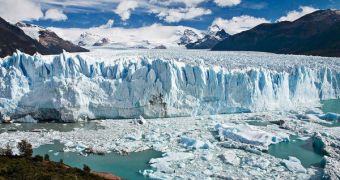Over the past few years, governmental and private programs have seen a slow, but constant, decrease in the amount of pollution that is generated around the world. In spite of that, scientific measurements have revealed that the pollution layers are, in fact, getting thicker, and experts have had no explanation for this phenomenon until recently. Now, they have finally found the answer. It would appear that the melting alpine glaciers are to blame for this situation, as they are now carrying downstream large amounts of chemicals, LiveScience reports.
Since the 1990s, mountain glaciers around the world have begun to melt at very high rates, either threatening nearby regions with floods, or with immense droughts. Their increased activity is not a good news, as billions of people around the world are depending on their waters for their very lives. Small parts of the glaciers melt naturally, and these streams eventually form rivers. Irrigation systems then take water from these rivers, and spread it across wide and dry terrains. When this source of water is gone, rainwater alone will not be able to cover demands.
“Considering ongoing global warming and accelerated massive glacial melting predicted for the future, our study indicates the potential for environmental impacts due to pollutants delivered into pristine mountainous areas,” Swiss Institute for Chemical and Bioengineering expert Christian Bogdal explains. He has been the leader of a science team that will shortly publish a new report on the issue. The paper has been accepted for print in the November 1 issue of ACS' journal Environmental Science & Technology.
Anti-pollution legislation, passed on several years ago in some countries, has limited the amount of organic pollutants that could be introduced in pesticides, electric equipment, paints and other such products. However, their levels continue to increase, which can only mean that they come from glaciers. The ices gather large amounts of chemicals each year, as they grow, but, when they melt, they release everything back into the atmosphere or the water streams they generate.
According to the new report, the same amount of organic pollutants falls in today's lakes and rivers as it did in 1960, in spite of all the technological progress that has been made so far.

 14 DAY TRIAL //
14 DAY TRIAL //